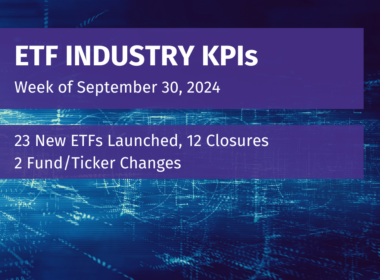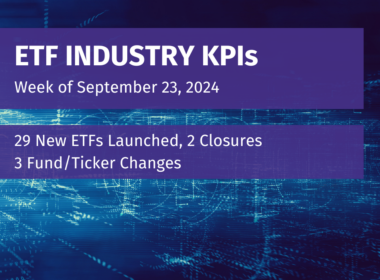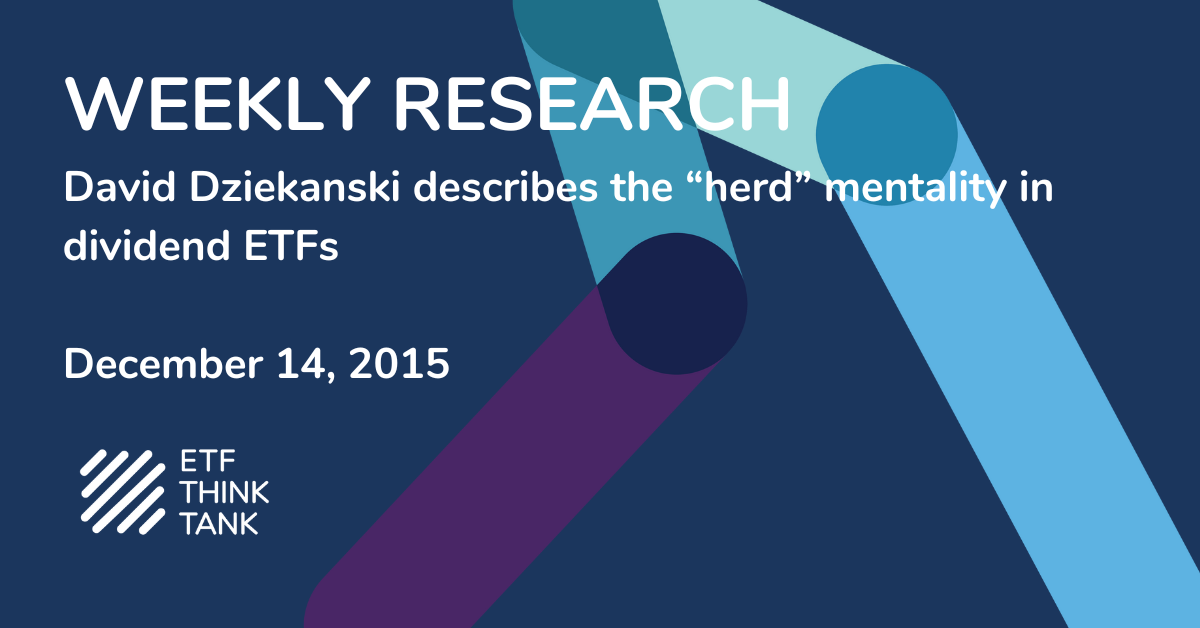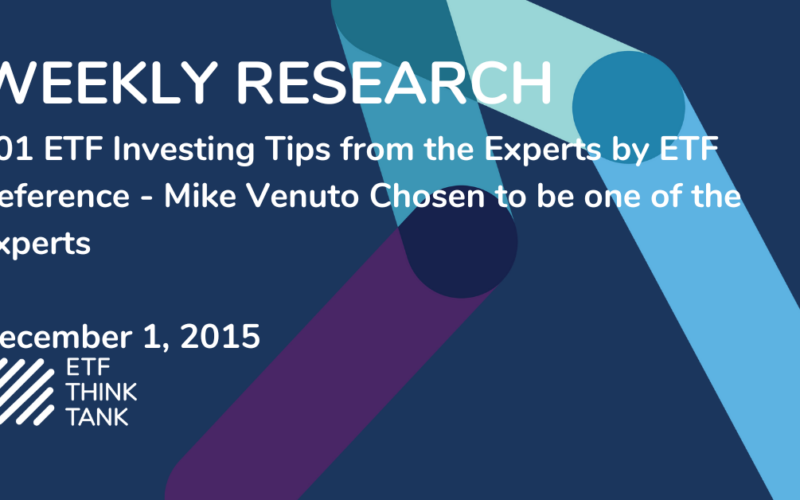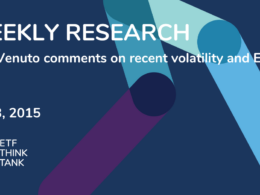This article is part of a regular series of thought leadership pieces from some of the more influential ETF strategists in the money management industry. Today’s article is by David Dziekanski, partner and portfolio manager of New York-based Toroso Investments.
Allocators and investors in the smart-beta ETFs are arguably acknowledging that active and rules-based strategies offer more dynamic solutions for the current global investment environment.
Flows in these vehicles have increased significantly this year. When choosing a smart-beta fund, many allocators have used similar evaluation approaches as they would in the actively managed mutual fund space. In this world, fees and performance are key. We believe there is a lot to be desired with this approach.
In the active investment world, allocators prefer a manager to have as long of a track record as possible. This is true even though their investment approach likely has changed, or has at least been tweaked, over time. Similar to their approach to selecting an active manager, investors’ capital has also focused on smart-beta products with significant assets under management. There is a lot of that makes sense with this.
Rethinking Smart-Beta Approach
With size comes scale—and typically, cost advantages in the form of cheap expense ratios and liquidity. Despite this, we believe investors need to rethink their approach to selecting smart-beta products, and recent flows have shown that the marketplace is beginning to agree.
Ignoring potential undisclosed frictional costs associated with some of the largest smart-beta ETFs can be costly. Unlike active managers, smart-beta ETFs do not consider overlapping portfolio positions and rebalancing activity in other products, and their investment process rarely develops over time.
Instead of tweaking (improving) an existing product with significant assets under management, ETF issuers more times than not will opt to launch an entirely new product with those tweaks. For these reasons, we believe investors need to rethink their approach to sticking by the old guard or run the risk of missing out on some of the most innovative and creative approaches available today.
There are approximately 850 smart-beta ETFs in the U.S., with just under $500 billion in AUM. To put that into perspective, there are more than 1,800 ETFs, coming in at over $2 trillion in AUM in aggregate. That makes smart-beta products almost 50% of the ETF offerings available to U.S. investors, representing about a quarter of the overall AUM.
U.S. dividend tilts have been the most successful form of smart-beta funds by assets, coming in at $80 billion in AUM. The four largest dividend ETFs all top $10 billion in assets, and measure in at $57 billion in aggregate, making up over 72% of the dividend ETF assets under management:
- Vanguard Dividend Appreciation (VIG | A-82) ($19.3 billion)
- iShares Select Dividend (DVY | A-71) ($13.2 billion)
- SPDR S&P Dividend (SDY | A-78) ($13.0 billion)
- Vanguard High Dividend Yield (VYM | A-97) ($11.3 billion)
All four ETFs listed above were created between 2003 and 2006. Three of them rebalance just once a year, while the fourth rebalances twice a year (SDY rebalances quarterly between current constituents, but the index constituent list changes only once a year).
Three of the indexes behind these ETFs even rebalance on the same day, the third Friday of March. Two of them include methodologies requiring either 10 or 20 years of continuous dividend increases for a stock to be eligible. One only selects from stocks listed on the Nasdaq.
All other U.S. equity ETFs in the $10 billion club are linked to broad style box/sector, market-cap- weighted indexes, or indexes often covered by the media such as the PowerShares QQQ (QQQ | A-65)and the SPDR Dow Jones Industrial Average Trust (DIA | A-85). It should be noted that Guggenheim S&P 500 Equal Weight (RSP | A-80) is the closest nonmarket cap to the $10 billion club outside of these four, at $9.76 billion as of Dec. 11. The hunt for yield has been here for a long time.
How Similar Are These ETFs?
Many allocators have used these ETFs interchangeably in their strategies. The overlap chart below shows how uniquely different these baskets are:
| Overlap | VIG | DVY | SDY | VYM | VTI |
| VIG | |||||
| DVY | 6% | ||||
| SDY | 35% | 16% | |||
| VYM | 29% | 26% | 22% | ||
| VTI | 19% | 13% | 16% | 37% |
What Are Flows Indicating?
The iShares Select Dividend (DVY) and the Vanguard Dividend Appreciation (VIG) experienced outflows of more than $1 billion year-to-date (the Vanguard High Dividend VYM has led all dividend ETPs in inflows, with more than $1 billion coming in this year):
5 Biggest Inflow/Outflow In US Dividend ETP Space Year-To-Date
| Name | Ticker | Est Net Flow YTD ($) |
| Vanguard High Dividend Yield | VYM | 1,048,033,586 |
| ProShares S&P 500 Dividend Aristocrats | NOBL | 444,788,500 |
| WisdomTree US Quality Dividend Gr | DGRW | 321,286,325 |
| PowerShares S&P 500 High Div Low Vol | SPHD | 283,747,000 |
| WisdomTree MidCap Dividend | DON | 215,832,983 |
| WisdomTree LargeCap Dividend | DLN | -597,735,041 |
| iShares Core High Dividend | HDV | -861,785,500 |
| SPDR S&P Dividend | SDY | -865,872,247 |
| Vanguard Dividend Appreciation | VIG | -1,315,241,090 |
| iShares Select Dividend | DVY | -1,551,166,000 |
It seems allocators are starting to consider newer products. Of the five ETFs listed above with the biggest inflows YTD, three have inceptions starting after October 2012; and of the five ETFs with the biggest outflows YTD, four have inceptions prior to July 2006.
Some Different Approaches
There are many interesting approaches to seeking dividend beyond these four traditional options. Here are a few different ways to approach a portfolio seeking dividends:
- Maximize Dividend per unit of risk: Get as much yield as possible in as small of an allocation as possible, in a low-volatility approach
o GlobalX Super Dividend (DIV | B-39)
- Access Dividend Growers instead of focusing on maximizing current distributions
o WisdomTree US Quality Dividend Growers (DGRW | A-89)
o iShares Core Dividend Growth (DGRO | A-85)
- Quality Screens
o FlexShares Quality Dividend (QDF | B-86)
o O’Shares FTSE US Quality Dividend (OUSA)
- Dividend Growth without equity exposure
- Discounted Closed-End-Funds
o PowerShares CEF Income Composite (PCEF)
o YieldShares High Income (YYY)
How much money could theoretically trade because of index rebalances on the third Friday of March?
Taking a very basic approach to this question, let’s look at the “average” expected dollars rebalanced for each four of these funds:
| Fund | Ticker | # Annual Rebalances (constituents) | Turnover Ratio % | Net Assets ($) | (Turnover / Rebal) * Assets ($) |
| Vanguard High Dividend Yield | VYM | 2.00 | 12.00 | 11,428,546,755 | 685,712,805.30 |
| SPDR S&P Dividend | SDY | 1.00 | 28.00 | 13,122,897,718 | 3,674,411,361.04 |
| Vanguard Dividend Appreciation | VIG | 1.00 | 20.00 | 19,579,076,154 | 3,915,815,230.80 |
| iShares Select Dividend | DVY | 1.00 | 20.00 | 13,463,550,366 | 2,692,710,073.20 |
| Total | 57,594,070,993 |
It’s theoretically possible that $7.3 billion worth of dividend stocks rebalances on the third Friday in March. This highlights one of the growing concerns in the ETF industry. Few ETFs out there have position limits (i.e., a maximum 5% from any one company), but almost none consider the impact they are having on the actual positions held within the fund.
Throw in the added layer of “me too” products attacking popular investment themes, and it’s possible ETF ownership of specific securities can become extreme and potentially dangerous when aligned with a popular investment theme.
Can This Impact Underlying Stocks?
While we are not claiming this name will have an increased or decreased weighting in future rebalances, the performance of Mercury General Corp. could be greatly affected by these particular ETFs.
While this is a rather small company, 9% of its market cap, and 18% of its float-adjusted market cap, are owned by these ETFs. What’s also interesting to note is that VIG has no allocation in any of the holdings listed above. This is because all but two trade on the NYSE instead of the Nasdaq, which is the pool of stocks VIG will select from. It’s also interesting to note that only SDY is currently listed in its creation basket on Bloomberg.
Thoughts to Consider On Smart Beta
- A long track record is not always a good thing for smart-beta ETFs. Active management can tweak their approach over time. Indexes can, in some cases, get stale. Instead of tweaking them, ETF issuers have often opted to create a new product instead.
- Size is not always your friend. Higher turnover and size can be a hindrance to future performance. Additionally, potentially high ownership of companies with smaller market caps can create inefficiencies and undisclosed frictional costs for shareholders.
- Overlapping holdings between smart-beta ETFs with similar mandates (in the case here, dividends) can cause undisclosed frictional costs for shareholders.
Overlap of rebalancing between smart-beta ETFs with similar mandates can cause undisclosed frictional costs for shareholders. Additionally, for certain approaches, you might consider an option that can rebalance at least four times a year, especially if it’s a very concentrated strategy with high active share.
At the time of this writing, Toroso had positions in PCEF. Toroso is affiliated with Global X Management Company. Toroso is a New York-based investment advisor focused on researching ETFs and other exchange-traded products, and designing asset allocation strategies, using ETFs that seek to perform well in various economic climates while emphasizing future objectives over past correlations. For more information about Toroso, call 646-465-5930, visitwww.torosoinv.com or emailinfo@torosoinv.com. For a list of relevant disclosures, please click here.




